0.96 Inch SPI OLED LCD Module
The 0.96-inch white OLED display module is a versatile display solution that can be easily interfaced with any microcontroller using SPI/IIC protocols. With a resolution of 128×64, it offers clear and crisp graphics and text. The package includes the display board, the OLED display itself, and a 6-pin male header pre-soldered to the board for convenient connectivity.
OLED (Organic Light-Emitting Diode) technology is a self-emitting display technology that utilizes a thin, multi-layered organic film sandwiched between an anode and cathode. Unlike LCD technology, OLED displays do not require a backlight, resulting in improved energy efficiency and thinner displays. OLED technology holds great potential for various display applications and is considered the leading technology for the next generation of flat-panel displays.
The basic structure of OLEDs consists of organic materials situated between the cathode and anode, with the anode typically composed of electrically conductive transparent Indium Tin Oxide (ITO). The organic materials form a multi-layered thin film, including the Hole Transporting Layer (HTL), Emission Layer (EML), and Electron Transporting Layer (ETL). When an appropriate electric voltage is applied, holes and electrons are injected into the EML from the anode and cathode, respectively. These holes and electrons combine within the EML to form excitons, resulting in electro-luminescence and the emission of light.
The choice of materials for the transport and emission layers, as well as the selection of electrodes, are crucial factors that determine the performance and quality of OLED components. With its inherent advantages, OLED technology offers superior display quality, energy efficiency, and design flexibility, making it an ideal choice for a wide range of display applications.
Setting up SPI/I2C Connection with GMS096A OLED Module
Being a new entry to the market, only limited resources are available on this small piece of miracle (GMS096A). I2C/SPI configuration always demands helpful resources as in any case. For the SPI setup, the module comes in 4 wire SPI configuration by default and to make it work with the arduinos you can use these libraries from Adafruit.
For the I2C setup it demands a little bit of work on the module. Actually it was one of our customers who shared these simple configuration steps with us, start with resoldering the resistor from position R3 to R1 and then short the R8 resistor with some solder tin (0 Ohm resistor). The R6 and R7 pullup resistors are already soldered, nothing to do there. Once done, the module is ready for I2C communication! The CS Pin is not necessarily needed, so just connect it to GND. The DC Pin selects the address. For standard address wire it to GND. The RES-pin needs a low pulse at startup and high voltage during operation (as in SPI mode), a 100nF capacitor to GND and a 10k res to VCC would be ideal
Features and Specification:
- OLED Driver IC: SSD1306
- Resolution: 128 x 64
- Visual Angle: >160°
- Input Voltage: 3.3V ~ 6V
- Compatible I/O Level: 3.3V, 5V
- Mini Size: 2.7 x 2.8cm
- Only Need 2 I/O Port to Control
- Full Compatible with Arduino
- Working temperature: -30°C ~ 70°C
- Module volume ( generous ): 27.0 x 27.0 x 4.1mm
- Factory configured for SPI protocol (can be easily changed to IIC)
PACKAGE INCLUDES
1 X 0.96″ Inch SPI OLED LCD Module 6pin (with GND VCC) White SSD1306 Chip

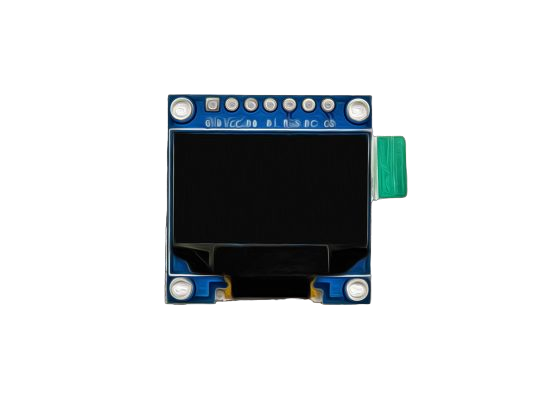
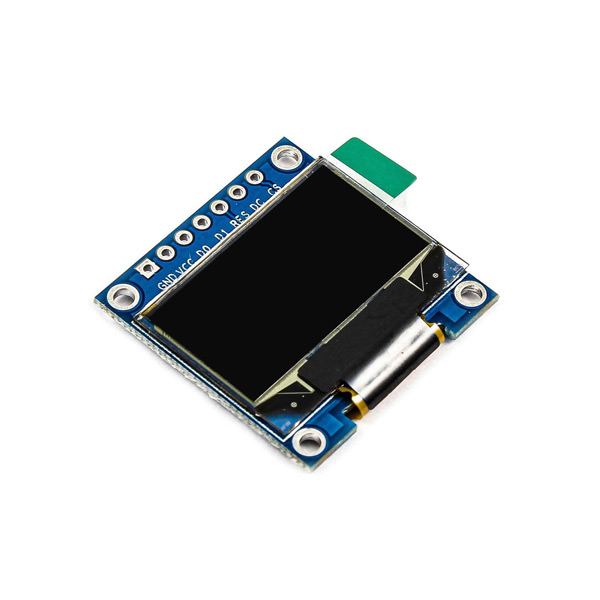
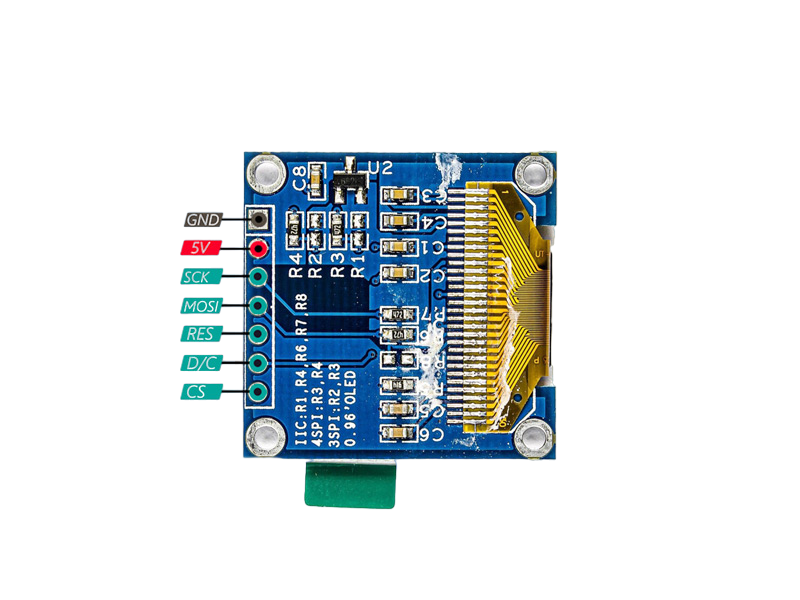
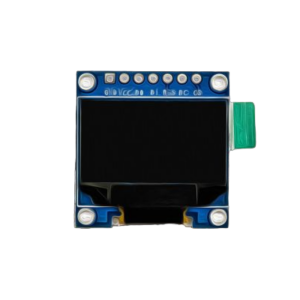
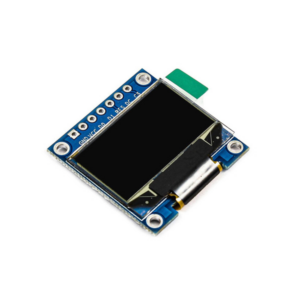
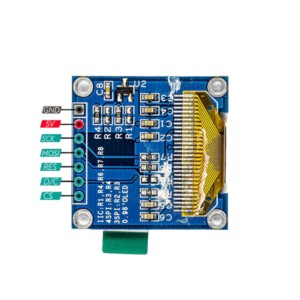
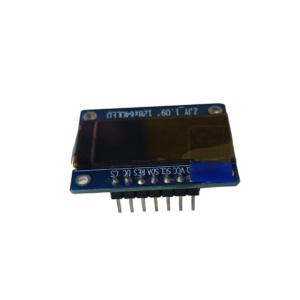
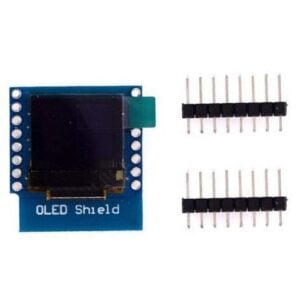
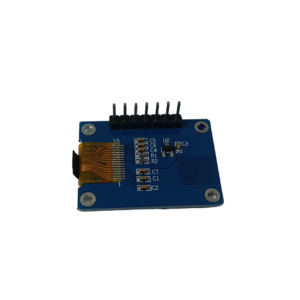
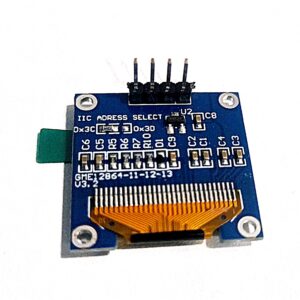
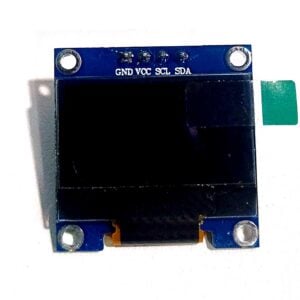

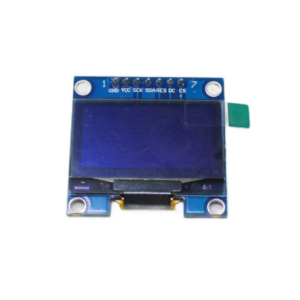
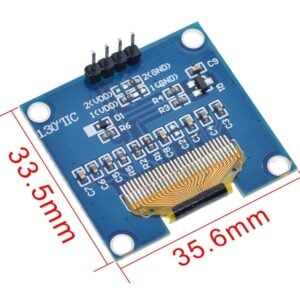
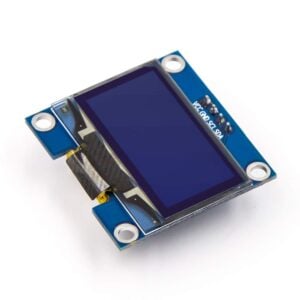
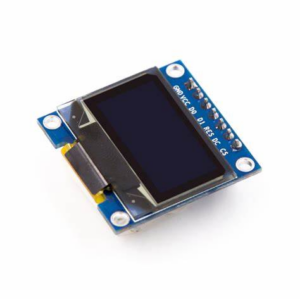
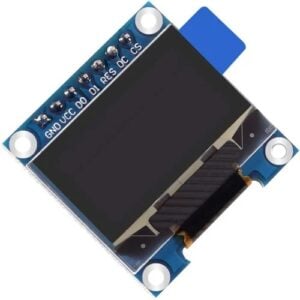
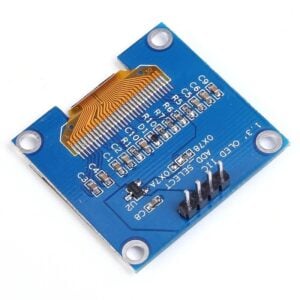
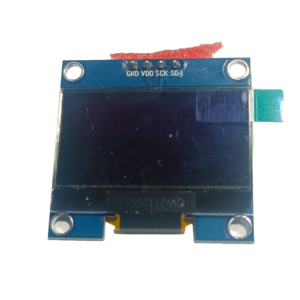



Reviews
There are no reviews yet.